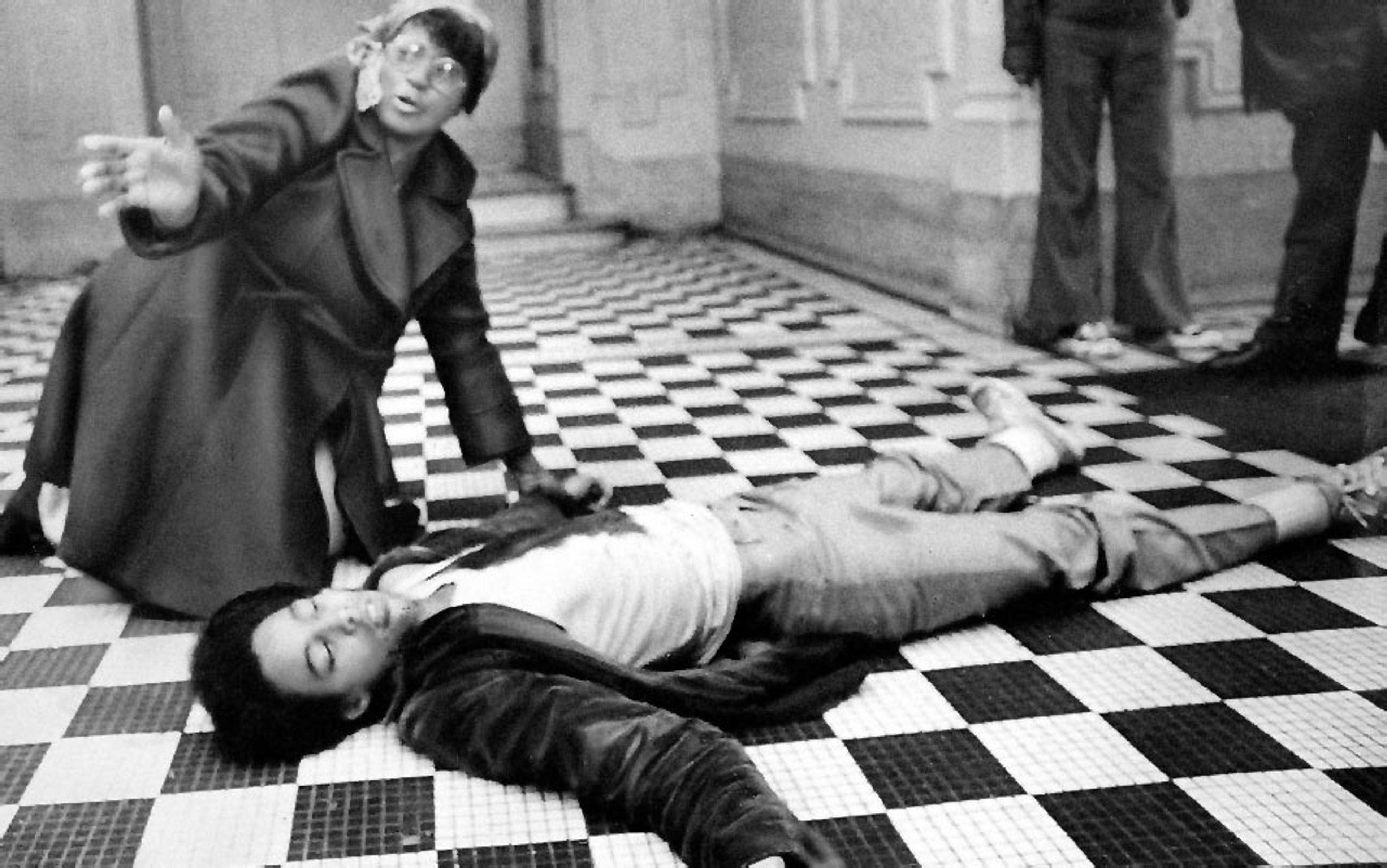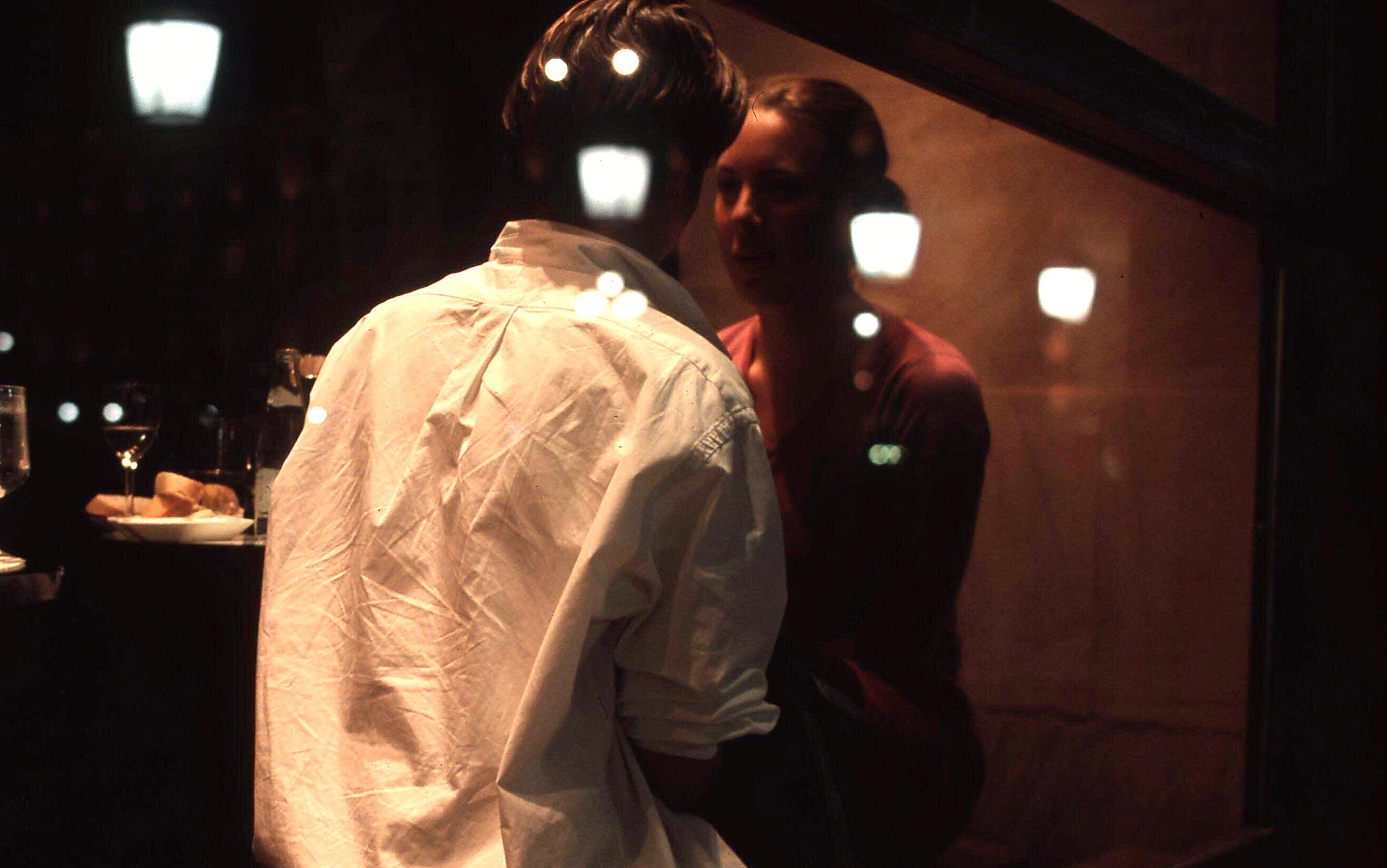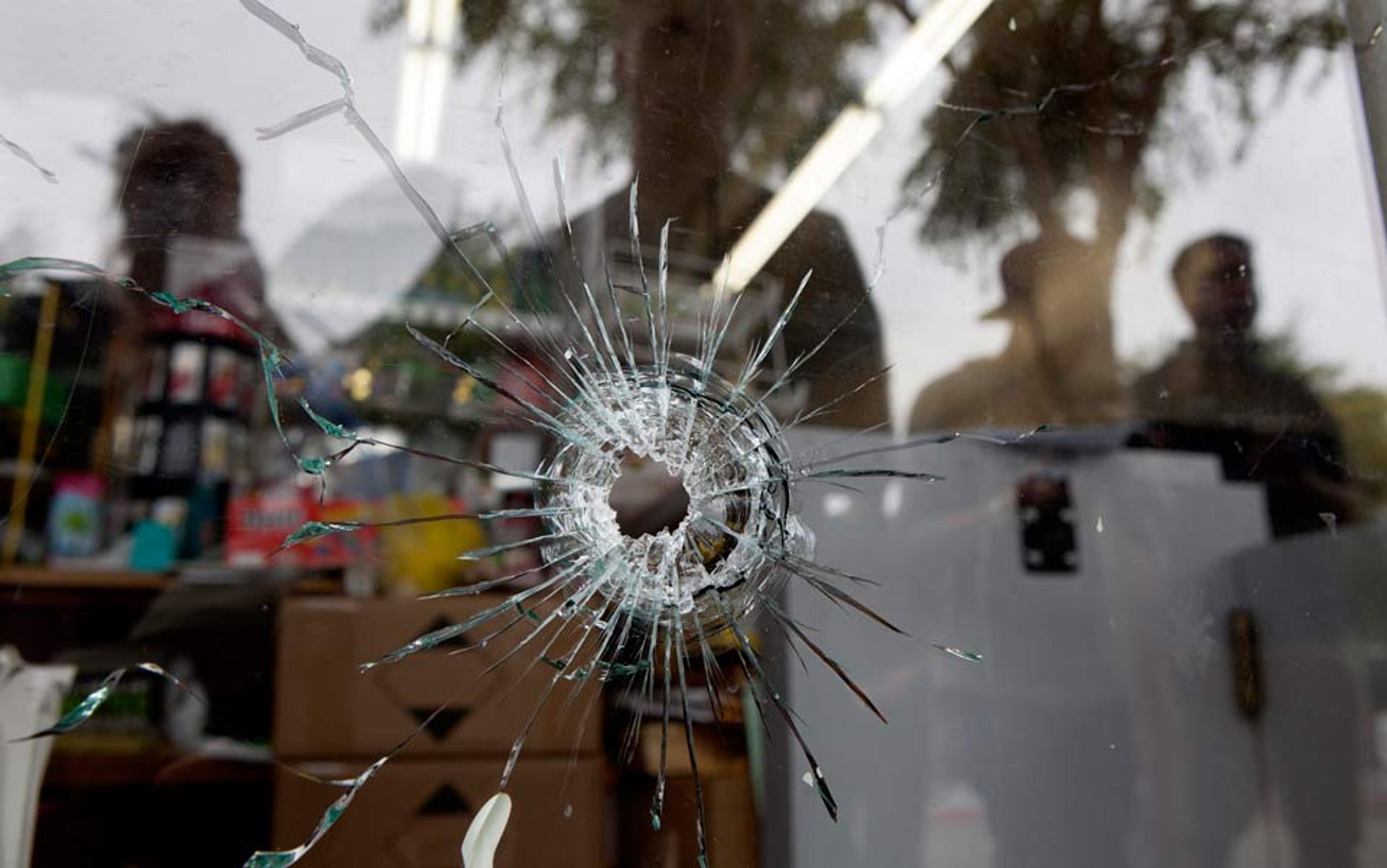Bethesda in the state of Maryland is the kind of safe, upscale Washington DC suburb that well-educated, high-earning professionals retreat to when it’s time to raise a family. Some 80 per cent of the city’s adult residents have college degrees. Bethesda’s posh Bradley Manor-Longwood neighbourhood was recently ranked the second richest in the country. And yet, on 11 March 2011, a young woman was brutally murdered by a fellow employee at a local Lululemon store (where yoga pants retail for about $100 each). Two employees of the Apple store next door heard the murder as it occurred, debated, and ultimately decided not to call the police.
If the attack had occurred in poor, crowded, crime-ridden Rio de Janeiro, the outcome might have been different: in one series of experiments, researchers found bystanders in the Brazilian city to be extraordinarily helpful, stepping in to offer a hand to a blind person and aiding a stranger who dropped a pen nearly 100 per cent of the time. This apparent paradox reflects a nuanced understanding of ‘bystander apathy’, the term coined by the US psychologists John Darley and Bibb Latané in the 1960s to describe the puzzling, and often horrifying, inaction of witnesses to intervene in violent crimes or other tragedies.
The phenomenon first received widespread attention in 1964, when the New York bar manager Kitty Genovese was sexually assaulted and murdered outside her apartment building in the borough of Queens. Media coverage focused on the alleged inaction of her neighbours – The New York Times’s defining story opened with the chilling assertion that: ‘For more than half an hour, 38 respectable, law-abiding citizens in Queens watched a killer stalk and stab a woman in three separate attacks.’ Over the years, that media account has been largely debunked, but the incident served to establish a narrative that persists today: society has changed irrevocably for the worse, and the days of neighbour helping neighbour are a nicety of the past. True or not, the Genovese story became a cultural meme for callousness and man’s inhumanity to man, a trend said to signify our modern age.
It also launched a whole new field of study. Fascinated by the Genovese case, the psychologists Darley, then of New York University, and Latané, then of Columbia, ran a series of telling experiments in the late 1960s. The most famous exercise took place in a room into which smoke would be piped. Research participants were taken inside, where they might be left alone; with two other participants; or with two researchers masquerading as participants oblivious to the incoming smoke. The majority of participants (75 per cent) who were alone in the room reported the smoke; by contrast, only 10 per cent of those in a room with two seemingly unobservant researchers reported it.
Darley and Latané attributed this to two factors: one was the ‘diffusion of responsibility effect’, where the presence of others leads individuals to assume that someone else will help or already has. The other factor was ‘the power of social norms’, in which people observe others’ reactions to evaluate the severity of a situation.
Their findings played out with chilling consistency through the years. In 1987, a college freshman at the University of New Hampshire was gang-raped by three fellow students. One of the perpetrators bragged to passersby in the hallway as the rape was occurring, yet no one (including the floor’s Resident Advisor) intervened or called the authorities. In 2009, up to 20 people watched a 15-year-old being gang-raped outside a high-school dance in Richmond, California.
Nor is this a problem only in Western countries. On 13 October 2011 in Foshan in the Guangdong province of China, a two-year-old girl wandered away from her family’s hardware store into a nearby alley and was hit by a passing van. While Wang Yue lay injured in the street, 18 people passed by without stopping to assist her. She was eventually hit by a second vehicle, which also did not stop. Almost 10 minutes after the incident, a passing trash collector finally moved the little girl out of the street and called for help. A week later, the little girl died in a hospital. The incident sparked a great deal of hand-wringing about the decline of morality and community in China, along with a debate about the changes wrought by the country’s rapid urbanisation and increasing emphasis on individual wealth over the communist ideal of universal equality.
There’s something in the culture – there’s this magical, mysterious part of the culture that breeds helpfulness
The events were so horrific, in fact, that the work of Darley and Latané couldn’t really account for the phenomenon in full. Why, in the face of such devastating violence, were otherwise ‘good people’ looking the other way? One issue worth exploring was the long-standing idea, perpetuated by the Genovese story, that big cities breed apathy, even callousness.
The theory turns out to be flawed – city size played a role, but not the most important one. Robert Levine, a social psychologist at California State University, Fresno, has evaluated ‘helping behaviours’ in cities all over the world. In each city, Levine and his team have run a series of experiments in which bystanders have the opportunity to help or not help a stranger. In one experiment, for example, researchers feigned a leg injury and dropped a large pile of magazines in view of a passing pedestrian, visibly struggling to bend over and pick them up. In another, researchers feigned blindness at a street crossing, held out their cane and awaited assistance. Still other experiments were simpler – researchers dropped pens or stamped-addressed envelopes and tracked whether a bystander tried to return the pen or mail the envelope.
Results challenge the long-standing assumption that big, anonymous cities are destined to be full of unhelpful people. In his 1994 paper on helping behaviours in 36 cities in the US, for the Journal of Personality and Social Psychology, some smaller places such as Paterson in New Jersey and Shreveport in Louisiana ranked low on Levine’s helping index. Meanwhile, the most helpful city internationally, of the 23 he and colleagues studied for their 2001 paper for the Journal of Cross-Cultural Psychology, was Rio de Janeiro – population some 6.5 million today.
‘There were some big cities that were helpful, and some small cities that weren’t helpful,’ says Levine. ‘And that would indicate that there’s something in the culture – there’s this magical, mysterious part of the culture that breeds helpfulness. The opposite of what I was taught growing up in New York, which was not to help. That you’re not a bad person if you don’t help.’
One explanation for the ‘magical, mysterious part of culture’ that Levine talks about could lie in how strongly a society values conformity over individualism. More individualist cultures, such as the US and much of Europe, value individual achievement and identity over group identity; members are expected to look out for themselves and challenging social norms is often admired.
Collectivist societies such as China, on the other hand, tend to value conformity and loyalty to the family or group over individual achievements or desires. While members of collectivist societies are often expected to look out for fellow group members at all costs, they’re also strongly discouraged from challenging social norms. Collectivist cultures more closely resemble our nostalgic memories of small-town living where neighbours watched each other’s children and pitched in on each other’s farms – and, presumably, called the police if their neighbours were being brutally stabbed to death. Brazil, for example – home to the most helpful city in Levine’s research – has a strongly collectivist culture.
But it’s more complicated than that. Collectivist cultures also place a premium on conformity. So while individuals in collectivist cultures might be more likely to step in to help a member of their in-group, that helpfulness might not extend beyond their group, particularly if intervention violates a strong social norm such as loyalty or obedience to superiors.
A 2012 paper in the journal Social Development compared behaviours in two different countries, individualistic Italy and collectivist Singapore. While bullying was more common in Italy than in Singapore, Italians, especially girls, were also more likely to defend the victims and engage in active intervention. In other words, the rugged individualists were more likely to buck prevailing social norms and help someone in need.
So how does all this help to explain the new bystanders – those who do nothing to stop online bullying or brutal college campus rapes? On 11 August 2012, a 16-year-old girl was sexually assaulted in Steubenville, a small town in Ohio, by two local football players – over the course of many hours and at several different locations. Throughout the evening, one perpetrator sent text messages describing the crime, along with nude pictures of the victim to friends. Onlookers at the scene took videos and shared them, too. All of which means that numerous partygoers and others were aware of the incident and failed to report it or assist the victim.
The events of that night baffled most of the US public, but when viewed in a different framework, the inaction of recent bystanders to sexual assault and bullying makes sense. Fraternities, the military, and sports teams such as Steubenville’s hometown football team, are mini-collectives within the largely individualist society of the US. And mini-collectives, just like more traditionally collectivist societies, are apt to value conformity and punish or ostracise those who defy the group’s social norms.
knowing every single witness or partygoer won’t save a rape victim if all of those witnesses are bound by strong social norms that discourage intervention
Alan Berkowitz, a California psychologist and expert in rape prevention, told me that would-be bystanders can’t help but weigh up the consequences of defying social norms. ‘When you’re in the moment, all the barriers come into play,’ he says. ‘You’re afraid of embarrassing someone else, you’re afraid of being retaliated against, you think that other people aren’t bothered. When you’re in a very powerful peer group, like a group of young men – the most important thing that young men are taught is to fit in with other young men.’
Social norms themselves aren’t necessarily good or bad. But in some collectivist cultures, social norms may pressure members to look the other way, especially when it comes to sexual assault. Steubenville in Ohio isn’t New York City, where the Kitty Genovese narrative implied that city size and anonymity caused callousness on a massive scale. The Steubenville tragedy demonstrates how flawed that assumption is. Even knowing every single witness or partygoer won’t save a rape victim if all of those witnesses are bound by strong social norms that discourage intervention.
And the advent of social media has only magnified the bystander effect, creating more bystanders and offering those same bystanders a protective cloak of invisibility, sometimes anonymity. On the night of the Steubenville assault, someone posted a photo on Instagram of the victim, unconscious, being carried by her wrists and ankles by the perpetrators. One of the perpetrators and various witnesses sent numerous text messages to friends, along with a photo of the victim, unconscious and nude, together with details of the night’s events. Yet another witness reportedly took a cell phone-video of the unconscious girl being sexually assaulted, although he claimed to have deleted it the next day. And there was a particularly horrifying YouTube video of someone describing the sexual assault and mocking the victim as ‘dead’.
We’re seeing social and other electronic media being ‘used in the moment, and in the cover-up as well’, I was told by Jackson Katz, the co-founder of Mentors in Violence Prevention, one of the first US bystander intervention training programmes. The Steubenville perpetrators, for example, relied heavily on text messages in their effort to cover up the assault. Trent Mays, one of the perpetrators, sent a message to one friend, saying: ‘Just say she came to your house and passed out.’ In other messages, Mays tried to convince the victim not to press charges, writing: ‘This is the most pointless thing. I’m going to get in trouble for something I should be getting thanked for taking care of you.’
This type of cyberbullying, in which bullying either occurs exclusively online or accompanies in-person attacks, has also increased and has, in a few instances, resulted in tragic suicides. Throughout 2009, Phoebe Prince, a student at South Hadley High School in Massachusetts, was bullied both in person and online. Fellow students allegedly threw things at her, knocked books out of her hands, harassed her in hallways and the school library, and called her an ‘Irish slut’ and ‘whore’ on Twitter, Craigslist and Facebook. On 14 January 2010, after a particularly difficult day of bullying, Prince went home and hanged herself.
The internet has dramatically increased the number of potential bystanders to bullying and sexual assaults, which only serves to exacerbate the diffusion of responsibility – the more bystanders, the less likely that any one person will take action. Instead of a few witnesses in a school hallway or at a drunken party, anyone with a cell phone or Facebook account can now receive pictures of a sexual assault in progress, or witness cyberbullying on a Facebook page.
how can you avoid being the kind of passive bystander who watches an inebriated young woman led upstairs at a party?
It’s also hard to ignore the fact that people just seem to be meaner online. The clinical psychologist John Suler of Rider University in New Jersey attributes the often excessively harsh or aggressive behaviour of people online to something he calls the ‘online disinhibition effect’. The crux of the theory is simple: it’s easier to be nasty when you can’t see the person to whom you’re being nasty. ‘People don’t have to worry about how they look or sound when they type a message,’ writes Suler in a 2004 paper for the journal CyberPsychology and Behavior. ‘They don’t have to worry about how others look or sound in response to what they say.’
So how can you avoid being the kind of passive bystander who watches an inebriated young woman led upstairs at a party, or a little girl injured on a busy road? In recent years, researchers have finally begun to tap years of studies to answer the question of how to reverse the bystander effect and spur onlookers into action. Bystander intervention training has become the next frontier in bullying and violence prevention – and a major focus of funding from the US Centers for Disease Control and Prevention in recent years. The programmes, while relatively new, focus on countering the five barriers to intervention that Darley and Latané outlined way back in 1970: the bystander must notice the situation, recognise that it requires an intervention, feel personally responsible for intervening, choose a method of intervention, and complete the intervention.
Given the important role of culture, many programmes focus on changing social norms by creating a different kind of peer pressure, so bystanders do the right thing. ‘How does one go out and change a norm?’ asks Levine, whose research on helping behaviours within cities led him to work with the Heroic Imagination Project, a San Francisco-based effort to combat the negative effects of conformity and obedience. ‘We try to use the same forces that drive us to conform, and now we try to flip those forces and create a new conformity pressure that will lead in the right direction,’ he explains.
Another programme, Katz’s Mentors in Violence Prevention (MVP), works with opinion-leaders – favourite coaches, teachers, athletes, fraternity presidents – to change those social norms. The thinking is that if the ‘cool kids’ can be convinced to stand up to sexist or homophobic jokes, or challenge a frat brother or fellow team member who’s about to take advantage of someone, their communities will gradually evolve to encourage intervention. Katz, an educator long involved in the fight against sexual violence, says: ‘The question isn’t, what do we say to young men on a high-school football team? Rather it is, how do we get into these systems? How do we hold the leadership accountable?’
Meanwhile, the California psychologist Alan Berkowitz uses a programme he calls the Social Norms Approach, originally developed to discourage excessive alcohol consumption on college campuses. The strategy there is to place perceived social norms under the microscope, exposing the dynamic of the bystander effect as it unfolds. A grasp of the phenomenon helps individuals see, more clearly, when someone is crossing the line, and provides the strength and impetus to intervene.
Nobody thinks they’re the kind of person who would stand by while a woman is raped in the room next door
‘If you ask men: “Would you personally respect someone who intervenes in a potential sexual assault?”, they overwhelmingly say yes,’ explains Berkowitz. ‘But they don’t believe their peers share that belief. There’s a gap between what people believe and what they think others believe.’ The hope is that, by convincing young men that they’re not the only ones worried about that girl their fraternity brother is trying to take upstairs, you will increase the likelihood that someone will intervene.
Bystander intervention training programmes also aim to provide would-be heroes with the tools to act safely and effectively. ‘Most people think they only have two choices – intervene physically at point of attack, or do nothing,’ says Katz. ‘Our job as educators is to provide them with a menu of choices, so people can think through them and have options when the pressure’s on.’ For the shy, the socially pressured and the seriously cowed, Katz and others advise intervention through distraction – telling a would-be rapist that his car is being towed or that he is needed elsewhere actually works as an intervention. They are also advised to seek intervention allies: a potential victim’s group of girlfriends can help to rescue her, as can authority figures or police.
Reversing the bystander effect and turning more of us into proactive guardians of the public good is going to take some work. ‘How is it possible that, in 2014, you still have dozens of colleges and universities without any mandatory sexual assault training?’ Katz asks.
‘Nobody thinks they’re the kind of person who would stand by while a woman is raped in the room next door, yet these incidents continue to occur,’ Levine says. ‘We have a lot of data on this. When you ask, most people will give you an explanation of why they wouldn’t stand by in these kinds of situations – because they’re religious, because they respect women, the list goes on. You have to teach people about the illusion of personal invulnerability – most people don’t think they are the kind of people who would just stand by and do nothing. But they are.’






